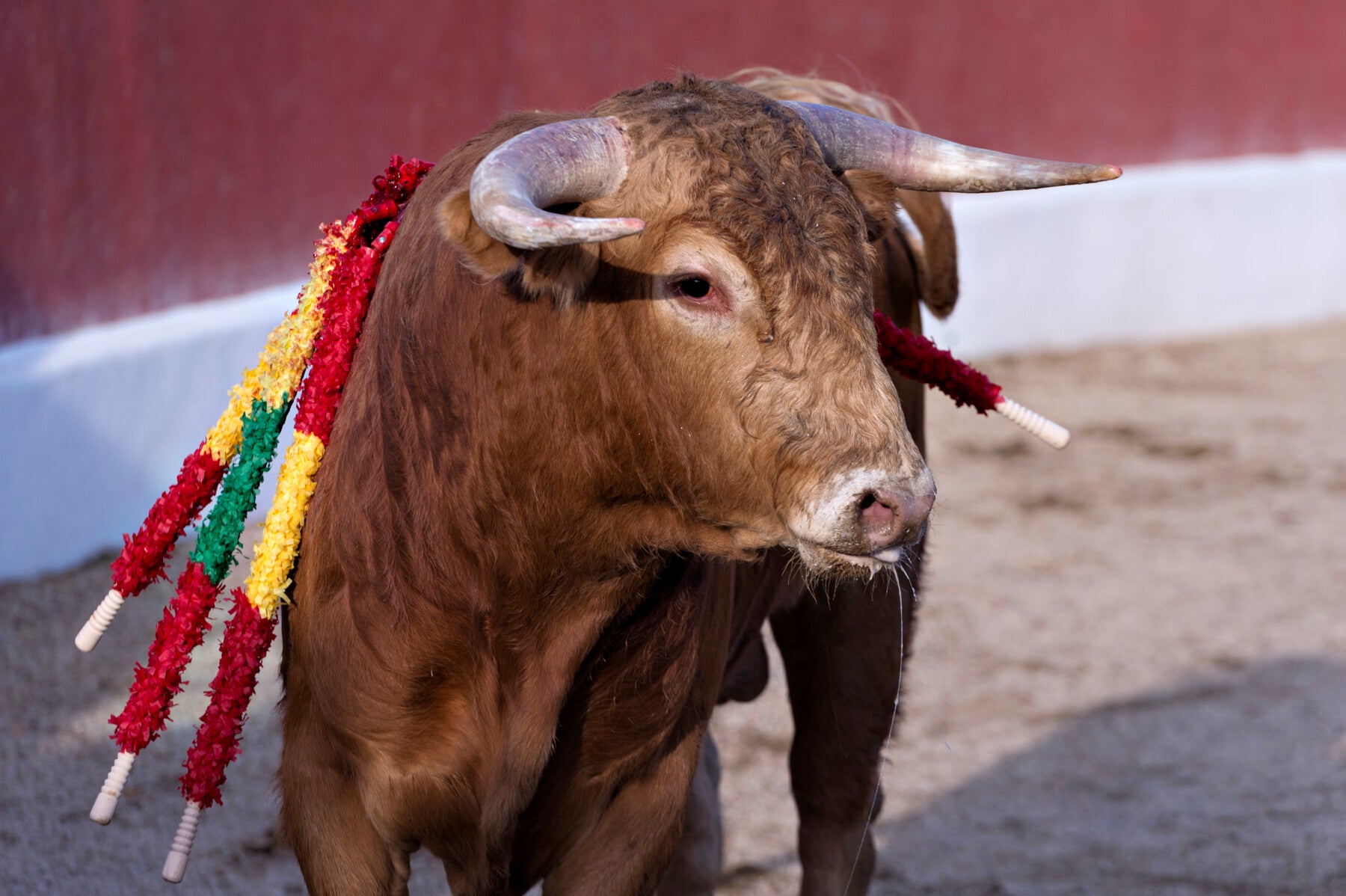
Every year, approximately 180,000 bulls are killed in bullfights around the world, with many more killed or injured in bull fiesta events. The bulls suffer from a protracted death in the bullfighting arena, weakened and tormented both physically and mentally including with spiked lances, before the matador enters the rings and stabs them to death with a sword. After the bullfighter, or matador, stabs the bull with banderillas (wooden sticks with spiked ends), his objective is to kill the bull with what is often claimed is “a swift clean kill” by driving a sword blade between the bull’s shoulders. In truth, most matadors miss the target, injuring the bull’s lungs and bronchial tubes, causing blood to flow and bubble through the animal’s mouth and nose.
Bans increasing
Bullfighting is already banned in many countries including Argentina, Canada, Colombia, Cuba, Denmark, Italy and the United Kingdom. There are only a few countries throughout the world where this practice still takes place: Spain, France, Portugal, Mexico, Venezuela, Peru and Ecuador. Although legal in Spain, some Spanish cities, such as Calonge, Tossa de Mar, Vilamacolum and La Vajol, have outlawed the practice of bullfighting. Spain’s Balearic Islands have made several attempts to ban bullfighting, but this has been overturned by Spain’s constitutional court.
Likewise, in Mexico, bullfighting is banned in the five states of Sinaloa, Sonora, Guerrero, Coahuila and Quintana Roo (but remains legal in 27 Mexican states). Mexico’s Supreme Court has declared that bullfighting is not cultural heritage, and in June 2022 a provisional suspension of bullfights at Mexico City’s Plaza México—the largest bullring in the world—became a definitive ban.
Bull fiestas
A number of cruel bull fiestas are also still practiced across Spain, from bull runs such as Pamplona where the bull is chased by groups of baying participants through the narrow streets and into a bullfighting area where he is fought by a matador; to fire bull events such as El Toro Jubilo where a device attached to a bull’s horns is set alight and he is tormented by spectators pulling at his tail and firecrackers exploding around him; to the Toro de la Vega, where the bull is chased out of town and into a meadow by spear-wielding participants on foot and on horseback who surround him, tormenting, goading and stabbing him.
After many years of campaigning by PACMA and HSI to end the Toro de la Vega fiesta, restrictions have now been placed on the annual event which limits the number of participants and ensures the bull can no longer be killed by them as part of the event. While this does not remove animal suffering from the event, it is nonetheless a significant step in the campaign to end such cruelty, one that also applies to other events in the region and which was upheld by Spain’s Supreme Court in 2019.
In India, the Jallikattu event is a cruel practice in which crowds of young men pursue and torment bulls, taunted by the crowds, their tails twisted and broken, hit, wrestled to the ground and beaten and prodded with nail studded sticks. Chili powder is often thrown into their eyes and they are forced to drink alcohol to anger them. In South Korea, bulls are made to fight each other in a bullring, a process that can lead to facial and head injuries from the sharp horns.
Declining support
In Spain, data collated by the Ministry of Culture and Sport continues to show a decline in the number of bullfights held annually: 1,425 events were held in 2019, compared to 2,684 events in 2009, an almost 50 percent decline in a decade. The same data also shows a continued decline in attendances at bullfights, with just 8 percent of the population attending such events in 2018-2019.
Opinion polls show that the Spanish public are opposed to these cruel spectacles: An Ipsos MORI poll for HSI in 2013, revealed that only 29 percent of Spanish citizens supported bullfighting while 76 percent were opposed the use of public funds to support the industry. On bull fiestas, 74 percent of the Spanish public were opposed to the Toro de la Vega bull fiesta (Ipsos MORI, 2014).
Bullfighting and bull fiestas rely on money from tourists. The Association of British Travel Agents (ABTA) lists both types of events as “unacceptable practices” in its Animal Welfare Guidelines, which have been created to offer guidance to ABTA members and the wider tourism industry.
The COVID-19 pandemic stopped many bullfights and bull fiestas, including the annual Pamplona bull run, from taking place in recent years. With so many events dependent on income from tourists, it is to be hoped that financial pressures will cause even more events to end for good.
You can help:
- Never attend a bullfight or a bull fiesta
- Avoid any tour operators who support these types of events; take your custom elsewhere
